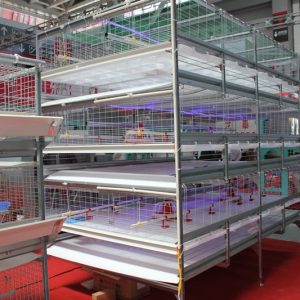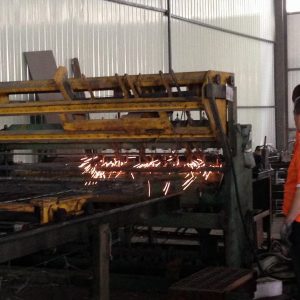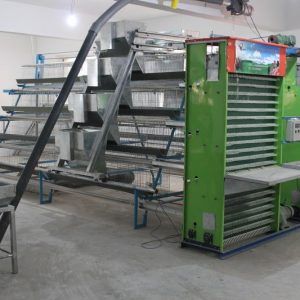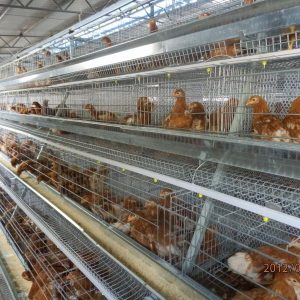
Research indicates precautions for laying hens
Doing the following is the key to preventing early death of chicks.
1. Temperature problem: The temperature should be suitable. The chicks are more sensitive to temperature. They keep about 35℃ within 1 week after hatching. With the increase of age, they will decrease by 2-3℃ every week thereafter. In winter, it drops by 1-2 degrees, in other seasons it drops by 2-3 degrees. Some brooding rooms have poor conditions. The temperature is raised in advance, and the temperature rises too high. It is close to the edge of the stove or the edge of the boiler. More than forty degrees, resulting in chickens with insufficient water in the early stage. Only dehydration, especially the weaker chicks, increased dehydration speed leads to increased death, the temperature is too high, the absorption rate of warm yellow is too fast, and it is not very good for later disease resistance and autoimmunity.
7 days before the Hailan brown, it is generally recommended not to exceed 36 degrees, dehydration above 37 degrees is increased, the specific temperature should be determined according to the condition of the flock, do not look at the temperature of the chicken, do not blindly copy the standard and blindly look at the thermometer to set the temperature! The temperature is constant and suitable. The chicks are evenly distributed in the cage, not piled up, not close to the heat source or away from the heat source. The younger eggs hatch the chicks or the weaker chicks. Adjust them appropriately 1-2 degrees, and the strong chicks can be managed normally.
2. Drinking water problem: Chicks can lose 8% of the body’s water after 24 hours of storage and 15% of the body’s water after 48 hours of storage. In order to prevent the chicks from affecting normal physiological activities due to water loss, the chicks must be taught to drink water after entering the chicks. The water consumption of chicks is roughly 1.5 to 1.8 times the feed intake. Be careful not to cut off the water. In order to allow the chicks to learn to drink water as soon as possible, they can gently grasp the chick’s head and press the beak into the water for about 1 second. If every 100 chicks teach 5 birds, the whole group can learn quickly.
Drink water in a timely manner, especially chicks that have been transported for a long distance. Drink water in a timely manner, otherwise it will cause dehydration, adopt the free drinking method, and give 5% sugar water for the first drinking. It is generally enough to drink glucose for 1 day, not too much. Drinking glucose water or electrolytic multi-dimensional for a long time, drinking glucose or electrolytic multi-dimensional for a long time in large doses, can easily cause early diarrhea and low feed intake.
In addition, pay attention to the water temperature and water quality, and the water should be fed less. You can choose deep well water or plain water in the early stage. The water temperature should not be too high, preferably within 30 degrees, and drink it within 2 hours of each addition. The water temperature is higher. It is easy to cause early damage to the digestive tract of chickens or the formation of stress nephropathy. The long-term water content of feces is high, and it is difficult to recover in the later period. In some areas, the water becomes alkaline, causing losses to certain medicines or vaccines. Drinking for a long time can cause damage to liver, kidney, and intestinal functions, and irreversible damage to the body.
3. The density should be appropriate, the brooding density is too large, the environment in the chicken house is not easy to control, it will produce more harmful gases, and will produce pecking habits, the weight will not reach the standard, the respiratory tract will be uncontrollable in the later brooding, the brooding density is too small, and the brooding area Insufficient use of equipment and equipment, resulting in waste, etc. losses, the premise of good education is that it is better to have less and not to be greedy, this needs attention! I have seen many cases in the following chicken farms, especially in the autumn and winter seasons, when the environment in the chicken house is not well controlled, and the density of brooding is high. When the outside temperature is low, it is easy to have problems in the middle and late stages.
4. Light should be reasonable. Light can promote the feeding, drinking and activities of chicks. It should be given 23 hours of light within 3 days after hatching, and then gradually reduced until 8-10 hours of natural light. The reduction standard depends on the body weight of the large group of chickens at various stages, the development of the shin length, and the actual situation of the large group. If the development is normal, the light can be reduced according to the normal situation. If the development is not up to the target, the light time can be extended for a reasonable age. It can withstand extreme light, not anal, not chicken, and it can be divided into groups to extend the feeding time of the previous stage. It is not allowed to copy blindly!
5. Humidity should be appropriate. Maintaining high humidity within 10 days of age will help chick feather growth and prevent dehydration. Humidity should be lower after 10 days of age to avoid coccidiosis, generally 65% of 10 days of age, 10 55% in the future. Humidity issues should also be brought to your attention. Sometimes, the temperature is high and the humidity is not enough, or the temperature is too high, the humidity is too high, the chickens are irritable, and when the water temperature is low, some chickens are prone to bathing. In addition, the temperature in the early house is high, the humidity is low, and the dry heat in the house is easy to cause life-long damage to the respiratory mucosa of the chicks. It is irreversible in the later stage, causing some chicks to have persistent respiratory disease, encountering hot and cold stress or other stresses. , Will increase the sense of mixing until it is eliminated. When the humidity is too low, dust and flakes will fly in the chicken house during the chicken’s hair change, causing the disease to spread.
6. Use medication carefully. Excessive amount of medication or uneven mixing of the drug in the feed will cause drug poisoning. Therefore, when preventing and treating chick diseases, it must be fed according to the dosage. The liver and kidney functions of the chicks have not yet developed and the drug is decomposed. Weak metabolic capacity, slow metabolic rate, not large doses, long-term, multi-variety administration, too many treatment drugs, easy to cause liver and kidney failure and death, it is also a strong stress on the chicken body, causing greater body immune function There are many cases of damage in the terminal!
Good quality chicks, generally use medicines for bacterial diseases in the early stage, do not need to over-complicate prophylactic administration, special period, special treatment, such as the high incidence of adenomyosis in summer, according to the internal conditions of the plant and the flock A few days ago, the anatomical chicks were sampled for sampling. If there were some lesions in the glandular stomach or muscular stomach, they should be controlled in advance with adenomytic and intestinal drugs.
7. Care should be taken in the early stage, especially in the first seven days, and there must be able-bodied personnel in the field to take care of it. The temperature during the day is well controlled, but at night, especially in the middle of the night, the temperature is not necessarily well controlled, and some fields are overconfident in the equipment and personnel. In the end, there was a problem, and I have seen some cases that need attention.
Pay special attention to the chicks and take care of them regularly. The chickens are timid. In the new environment, they need to be cared for to prevent starvation, thirst, drowning, trampling, dogs, cats, and rats. If you are poisoned and die, you should also pay attention to observe the mental state and fecal condition of the chicks. If there is any abnormality, you should immediately take positive solutions.
For example, within 30 days, some chickens occasionally have gastrointestinal problems, stress enteritis, stress gland gastritis, stress muscle gastritis, or mixed feelings, causing indigestion, the chicken body is small, and the time is long, forming a small old chicken Or baby zombie.
According to clinical experience statistics, chickens with glandular gastritis in the first 7 days generally have a larger loss. If the disease occurs within 10-30 days, the management is in place, the treatment is symptomatic and timely, the loss is small, the management is not in place, and the treatment is not timely and does not Symptomatic, the onset of disease continues until the middle and late stages, the mixed feeling is serious, the uniformity of the large group is poor, the death rate is high, the loss is very large, and glandular stomach or muscular stomach lesions occur after 60 days. The first consideration is mold and some immunosuppressive diseases. Onset, the greater the loss, the worse the treatment effect.
8. Pick chickens regularly, every time you make a vaccine, pick chickens again, what kind of picks? Small, weak, sick, disabled, with light hair and no meat, strict body weight, and unhealthy chickens. Large weight gaps, stray chickens, and weak ones need to be eliminated. Abnormal chickens are prone to spread diseases and form a source of infection to ensure the health of large groups of chickens and eliminate them in a timely manner. The weight difference is not big, the spirit, feces, and normal chickens can be picked separately to extend the use time of chick feed. Pick out sick chickens and put them in the cage on the side of the air outlet, that is, on the side of the fan. It is forbidden to put them on the side of the air inlet.



